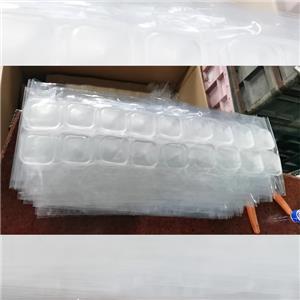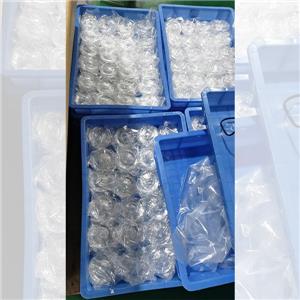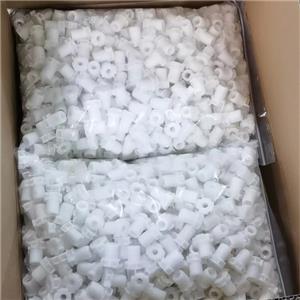The Future of Plastic Part Manufacturing: Innovations Driving Efficiency, Precision, and Sustainability

The plastic parts production industry is undergoing a radical transformation. As sectors ranging from automotive and aerospace to consumer electronics and medical devices demand lighter, stronger, and more cost-effective plastic products, manufacturers are adopting groundbreaking methods to stay competitive. This deep dive explores the cutting-edge technologies reshaping plastic products creation, with particular focus on low volume production of the plastic parts, advanced moulding techniques, and sustainable practices adopted by forward-thinking plastic parts factory operations worldwide.
1. Additive Manufacturing (3D Printing): Revolutionizing Prototyping and Low Volume Production
Additive Manufacturing (AM), commonly known as 3D printing, has redefined plastic parts production by enabling unprecedented design freedom. Unlike traditional moulding, AM builds parts layer-by-layer, allowing for intricate geometries that would be impossible with conventional methods. Technologies like Fused Deposition Modeling (FDM), Stereolithography (SLA), and Selective Laser Sintering (SLS) offer distinct advantages for plastic products:
- Material Diversity: From ABS to polycarbonate and specialty resins.
- Design Flexibility: Rapid iterations for prototypes or end-use plastic products.
- Cost-Effective Low Volume Production: Eliminates expensive tooling for small batches.
For plastic parts factory operations, AM slashes lead times from weeks to days. A low volume production run that traditionally required $50,000 in injection moulding tools can now be 3D printed for a fraction of the cost. However, challenges persist:
- Surface Finish: Often requires post-processing.
- Scalability: Not yet viable for mass plastic parts production.
- Mechanical Properties: Can lag behind moulding-made parts.
Ongoing advancements in multi-material printing and AI-driven process optimization are addressing these gaps, making AM indispensable for low volume production of the plastic parts and rapid prototyping.
2. Injection Moulding: High-Speed, High-Precision Mass Production
While AM excels in low volume production, injection moulding remains the gold standard for high-volume plastic parts production. Modern innovations are making it faster, smarter, and more sustainable:
- High-Speed Moulding: Cycle times reduced by 30–50% with servo-electric presses.
- Precision Tooling: High-thermal-conductivity steels minimize cooling time and warping.
- Automation: Robotics handle part removal, reducing defects in plastic products.
A plastic parts factory leveraging smart moulding systems can now embed IoT sensors to monitor pressure, temperature, and cycle consistency in real time. This data-driven approach cuts waste by up to 20%, crucial for both cost savings and sustainability.
For low volume production of the plastic parts, hybrid solutions like "bridge tooling" (low-cost aluminum molds) blend the economies of moulding with the flexibility of AM.

3. Advanced Composites: Reinventing Strength-to-Weight Ratios
The demand for high-performance plastic products has spurred the adoption of fiber-reinforced plastics (FRPs). By embedding glass, carbon, or aramid fibers into polymer matrices, plastic parts factory teams achieve:
- 50–70% Weight Reduction vs. metals (critical for automotive/aerospace).
- 3x Higher Tensile Strength than standard moulding plastics.
- Customizable Properties: Fiber orientation tunes strength/ductility.
Processes like resin transfer moulding (RTM) automate composite plastic parts production, making them viable for volumes previously limited to metals. A plastic parts factory serving the EV market, for instance, might use carbon-fiber-reinforced polyamide for battery housings—combining lightweight design with flame retardancy.
4. Sustainability: The Green Future of Plastic Parts Production
Environmental concerns are reshaping plastic products manufacturing. Leading plastic parts factory initiatives include:
- Recycled Materials: Post-industrial/post-consumer resins reduce virgin plastic use.
- Bio-Based Polymers: PLA and PHA from renewable sources for low volume production.
- Closed-Loop Systems: In-house recycling of moulding sprue and rejects.
For example, a plastic parts factory might use 100% recycled PET in injection moulding for food-grade packaging, cutting carbon footprint by 40%. Meanwhile, AM supports sustainability via minimal material waste (vs. subtractive methods).

5. The Plastic Parts Factory of Tomorrow
Integration is key. A next-gen plastic parts factory might combine:
- AM for Low Volume Production: Custom medical devices or aerospace prototypes.
- Hybrid Moulding: Quick-change molds for mid-volume runs.
- AI-Powered QC: Computer vision inspects plastic products in real time.
Conclusion
From low volume production of the plastic parts via AM to high-speed moulding and eco-friendly composites, the plastic parts production landscape is evolving at breakneck speed. Manufacturers investing in these technologies will lead in efficiency, precision, and sustainability—delivering the next generation of plastic products that industries crave.

